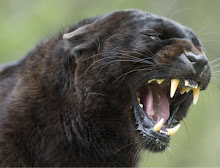
"Happy New Year!" That greeting will be said and heard for at least the first couple of weeks as a new year gets under way. But the day celebrated as New Year's Day in modern America was not always January 1st.
ANCIENT NEW YEARS
The celebration of the new year is the oldest of all holidays. It was first observed in ancient Babylon about 4000 years ago. In the years around 2000 BC, the Babylonian New Year began with the first New Moon (actually the first visible cresent) after the Vernal Equinox (first day of spring).
The beginning of spring is a logical time to start a new year. After all, it is the season of rebirth, of planting new crops, and of blossoming. January 1, on the other hand, has no astronomical nor agricultural significance. It is purely arbitrary.
The Babylonian new year celebration lasted for eleven days. Each day had its own particular mode of celebration, but it is safe to say that modern New Year's Eve festivities pale in comparison.
Story Continues With Link Copy/Paste
http://wilstar.com/holidays/newyear.htm
Times Square's famed New Year's Eve ball is going green after being fitted with almost 10,000 energy-saving lightbulbs which use the same amount of power as 10 toasters.
The sight of the ball dropping has traditionally marked the start of the new year for New Yorkers since 1907, and this year the festive landmark has marked its centenary with an environmentally-friendly redesign.
It has been fitted with 9,576 energy-efficient LED bulbs, said to be smaller but twice as bright as those used last year, ready for the celebrations, which are on the theme 'Let there be light'.
Together with the 672 Waterford Crystal triangles which make up the surface of the ball, the bulbs will help create a kaleidoscope of more than 16 million colours.
Kaleidoscope of colours
The ball was first dropped for the New Year's Eve celebration in 1907. Made of iron and wood, it weighed 317.5kg and was lit with 100 25-watt incandescent bulbs.
Over the century, five other versions of the ball were designed to ring in the New Year. In 1999, the ball was made from crystal to welcome the new millennium.
The new design and technology "will make the ball glow like nothing else", said Tim Tompkins, president of the Times Square Alliance, a business group in charge of the event.
"The whole world looks up to New York's New Year's Eve. I'm proud to be able to save energy and show off this technology to the world with such a special event," said Kaj den Daas, chairman of Philips Lighting, which created the bulbs.
More than a million revellers are expected to crowd into Times Square for the New Year's Eve countdown.


No comments:
Post a Comment